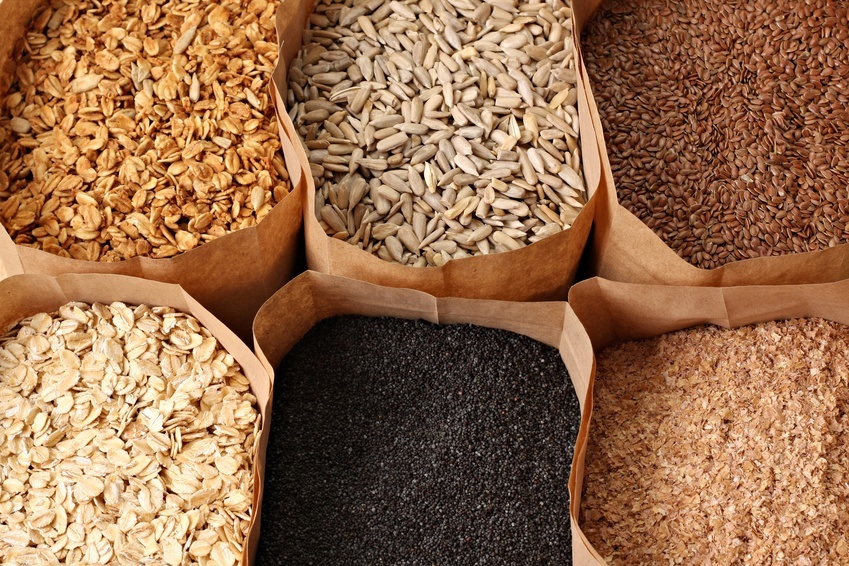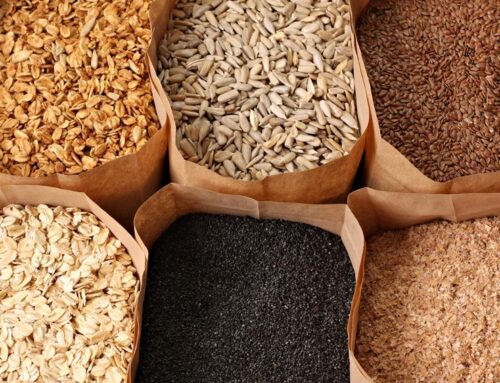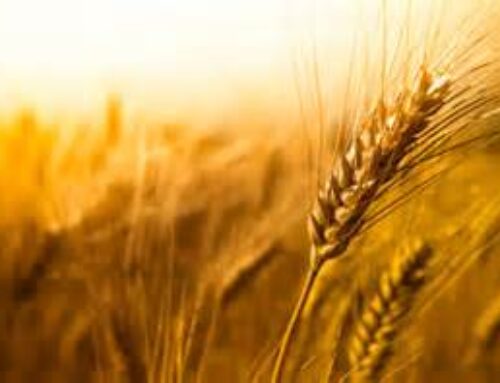Now that we’ve learned a bit more about wheat, I thought it might be nice to discuss the many other grains out there (after all, the GrainMaker does so much more than just grind wheat!). Whole foods seem to be more popular than ever (yay!), and it’s nice to be a little more familiar with all the many varieties in the grain family. So here’s some info on other grains, old and “new” alike…
Quinoa (pronounced “KEEN-wah”)
Quinoa contains no gluten, so it’s a useful ingredient for people with gluten allergies. Quinoa is also a good source of high-quality protein. Several varieties of quinoa pasta are available, as well as the whole grain. If using the whole grain, before cooking you must remove the naturally occurring powdery, soapy-tasting coating of saponin. Saponin is indigestible and may reduce the absorption of nutrients. Running water over the quinoa for 2 to 3 minutes should be enough to remove the saponin. After the saponin is removed and the quinoa is thoroughly dry, quinoa can be ground into flour or cooked whole as a cereal, or it can be substituted for brown rice in many recipes. The flour can be used as you would use rice flour, or combine it with wheat flour due to its lack of gluten.
Amaranth
Amaranth is remarkably similar to quinoa, however amaranth is much smaller and has a milder flavor. It also turns sticky when simmered in liquid, which can make it less versatile as a “rice”. It can be cooked whole into a gruel or boiled to produce tea. Grinding the seeds for use in flatbreads, cakes and drinks is typical; so too is popping them, in which case they are made into sweets, snacks, and are also becoming a popular addition to breakfast cereals. In Peru, fermented Amaranth is used to make a beer known as Chicha. Amaranth’s leaves can be boiled as a vegetable and they can also be eaten raw. Amaranth flowers are used as food coloring, cosmetic rouge and herbal remedies. Amaranth is disease-resistant, very easy to grow, and does well in areas afflicted by intense heat, poor soil, and drought. However, it also flourishes in wet tropical low-lands and mountain regions. The seeds are a wonderful source of protein, and boast twice the calcium of milk, three times the fiber of wheat, and the leaves are an extremely good source of iron – even better than spinach! Amaranth can be purchased as a whole grain, flour, and as a breakfast cereal. The flour works well in a wide range of baked goods, from yeast breads to muffins. It is low gluten and is usually combined with wheat flour.
Buckwheat
Buckwheat is not a wheat at all, and is actually not even related to it. Buckwheat was cultivated in the very early times by the Chinese and Japanese, and is not a cereal grain, but one of the leafy seed grains. It actually belongs to the family that includes rhubarb and sorrel. Buckwheat is easy to grow in difficult climates and is well suited to cold. It’s also pest resistant and quick to mature. Buckwheat can be used in everything from noodles to pancakes, and is sometimes even made into a porridge. Buckwheat noodles are available in health food stores and Japanese and Korean groceries. Buckwheat flour carries a strong flavor and is low in gluten. It can be used in small amounts in yeast breads, but is better in quick breads such as muffins, pancakes, and crepes. Toasted buckwheat groats are known as Kasha. They are sold whole, and in some markets in medium and fine grinds. Kasha can cook in only 10 minutes. Puffed kasha is available as a ready-to-eat cereal.
Buckwheat is not a wheat at all, and is actually not even related to it. Buckwheat was cultivated in the very early times by the Chinese and Japanese, and is not a cereal grain, but one of the leafy seed grains. It actually belongs to the family that includes rhubarb and sorrel. Buckwheat is easy to grow in difficult climates and is well suited to cold. It’s also pest resistant and quick to mature. Buckwheat can be used in everything from noodles to pancakes, and is sometimes even made into a porridge. Buckwheat noodles are available in health food stores and Japanese and Korean groceries. Buckwheat flour carries a strong flavor and is low in gluten. It can be used in small amounts in yeast breads, but is better in quick breads such as muffins, pancakes, and crepes. Toasted buckwheat groats are known as Kasha. They are sold whole, and in some markets in medium and fine grinds. Kasha can cook in only 10 minutes. Puffed kasha is available as a ready-to-eat cereal.
Barley
Barley as a whole grain is commonly used in soups and is a standard in dry bean and soup mixes. You can also find barley flour, flakes, and sometimes barley grits and barley malt. Barley flour long ago was a bread staple and is still used in flatbreads around the world. It can be used in all baked goods, though it contains little gluten and should be mixed with wheat flour. Barley grits can be cooked as a breakfast cereal and because barley is sticky and starchy, pearl barley is a nice alternative to risotto. Barley flakes are very similar to rolled oats in their cooking qualities. Malted barley is the main ingredient in malted milk powder, and malt also gives a delicious flavor to pancakes and waffle batters. Professional bakers often use a little barley malt in their flour as a dough enhancer because yeasts love the stuff!
Oats
Historians believe the cultivation of oats followed hand in hand with the raising of horses. Even now people eat only 5 to 10% of the USA oats crop. Oats are threshed and winnowed like wheat but must also be hulled. The hulled groats are long, narrow, and golden tan. Steel cut oats are grouts that have been cut or ground into bits. You can make steel cut oats with your GrainMaker mill! To make rolled oats, processors heat the grain kernels to loosen the husks then remove the hulls. The whole groats are steamed and passed through steel rollers that turn them into flakes. Old fashioned oats are rolled the thickest, while quick oats and instant oats are rolled thinner and cut into finer pieces. Oat bran is the outer coating of the grain. Whole and rolled oats still retain much of the bran. Oat flour is simply whole oats ground into a powder. Oat flour is good in pancakes, waffles, muffins, and other baked goods.
Rye
Compared to other grains, rye is low in protien and not especially loaded with nutriets. What appealed to farmers in Northern Europe was that it grows well in a cold climate, and will thrive in fairly lousy soil. Nearly all rye grown for human consumption in the USA is ground into flour for bread and crackers and some of the rest goes into whiskey. Rye is a heavy flour with very little gluten, so don’t expect baked goods made from it to rise substantially. Doughs will also be stickier than those made from wheat flours. Many varieties of rye bread are a staple in Europe. Whole cooked rye berries or flakes are a good addition to grainy breads. For porridges and muesli they are best used in combination with other grains.
~ Tracy Bartosik
Bibliography:
“All-American Waves of Grain” ~ Barbara Grunes & Virginia Van Vynckt
“A Cook’s Guide to Grains” ~ Jenni Muir
“The New Book of Whole Grains” ~ Marlene Anne Bumgarner
“Homegrown Whole Grains” ~ Sara Pitzer
www.grains.org





